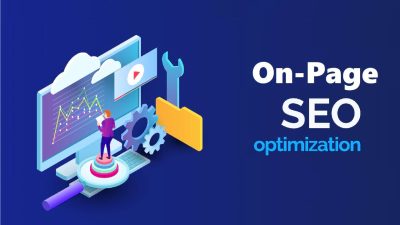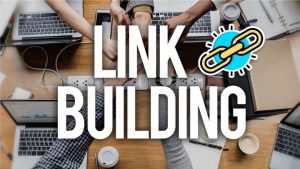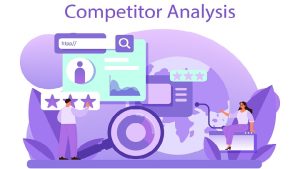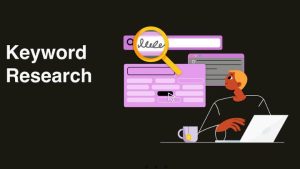
Mastering On-Page Optimization: Boost Your Website’s Visibility and Rankings
On-Page Optimization
On-page optimization, also known as On-page SEO (Search Engine Optimization), refers to the practice of optimizing individual web pages to improve their search engine rankings and attract more organic traffic. It involves making changes to various elements on a webpage to make it more search engine-friendly and user-friendly. Here are some key aspects of on-page optimization:
Keyword Research
Keyword research is an essential process in digital marketing and SEO (Search Engine Optimization) strategy. It involves identifying and analyzing the most relevant and effective keywords or search terms that users enter into search engines when looking for information, products, or services. The goal of keyword research is to uncover high-volume and low-competition keywords that can drive targeted organic traffic to a website. It helps marketers understand the search intent of their target audience and optimize their content accordingly. By conducting comprehensive keyword research, businesses can increase their visibility, improve their search engine rankings, and attract qualified leads to their websites.
Title Tag
A title tag is an HTML element that defines the title of a webpage. It is displayed as the clickable headline in search engine results and appears as the title of the webpage in the browser’s title bar. Title tags play a crucial role in search engine optimization (SEO) as they provide a concise and accurate description of the webpage’s content. An effective title tag is relevant to the page’s topic, includes targeted keywords, and is compelling to entice users to click through. Crafting well-optimized title tags can improve search engine visibility, and click-through rates, and ultimately enhance the overall user experience on a website.
Meta Description
A meta description is an HTML attribute that provides a brief summary or preview of the content on a webpage. It appears below the title tag in search engine results and aims to entice users to click through to the website. While meta descriptions do not directly impact search engine rankings, they play a crucial role in attracting organic traffic. An effective meta description is concise, engaging, and contains relevant keywords to accurately describe the page’s content. It should provide a compelling reason for users to choose that particular webpage over others in the search results. Crafting well-optimized meta descriptions can improve click-through rates and enhance the overall user experience.
Heading Tags
Heading tags, represented by HTML elements (h1, h2, h3, etc.), are used to structure and organize the content on a webpage. They provide hierarchical importance to the headings and subheadings within the text. The h1 tag represents the main heading of the page, while h2, h3, and so on represent subheadings of decreasing importance. Heading tags not only make the content visually appealing and easier to read, but they also play a crucial role in SEO. Search engines use heading tags to understand the structure and hierarchy of the content, and well-optimized heading tags with relevant keywords can help improve the webpage’s search engine rankings and overall visibility.
URL Structure
URL structure refers to the format and organization of a web address that identifies a specific webpage or resource on the internet. A well-structured URL is human-readable, concise, and descriptive, providing users and search engines with a clear understanding of the content on the page. A good URL structure incorporates relevant keywords, uses hyphens to separate words, avoids unnecessary characters or numbers, and follows a logical hierarchy that reflects the website’s structure. An optimized URL structure can improve user experience, make URLs more shareable and memorable, and potentially contribute to better search engine rankings by signaling the relevance and context of the page’s content.
Content Optimization
Content optimization is the process of refining and improving the quality, relevance, and visibility of website content to attract and engage target audiences. It involves strategically incorporating keywords, structuring content for readability, and enhancing user experience. Content optimization aims to align the content with the search intent of users and search engine algorithms. It includes elements such as keyword research, on-page SEO techniques, improving readability and formatting, adding relevant multimedia elements, and ensuring mobile-friendliness. By optimizing content, businesses can increase organic search visibility, attract qualified traffic, improve user engagement and conversions, and establish their authority and credibility in their respective industries.
Image Optimization
Image optimization is the process of enhancing and optimizing images on a website to improve performance, user experience, and search engine visibility. It involves compressing image file sizes without compromising quality, choosing the appropriate image file formats (such as JPEG, PNG, or GIF), and adding relevant descriptive alt text. By optimizing images, websites load faster, reducing page load times and improving overall site performance. Additionally, optimized images with descriptive alt text help search engines understand the context and relevance of the images, which can contribute to improved search engine rankings and better accessibility for visually impaired users who rely on screen readers.
Internal Linking
Internal linking is the practice of connecting pages within a website through hyperlinks. It involves strategically placing links from one page to another on the same website. Internal linking serves several purposes. It helps users navigate through the website, providing them with additional relevant content and improving the overall user experience. It also helps search engines discover and crawl different pages on a website more effectively, contributing to improved indexation and visibility in search engine results. Internal linking can also distribute authority and PageRank throughout a website, influencing the ranking potential of individual pages. By implementing a well-structured internal linking strategy, websites can enhance usability, improve SEO, and increase engagement and conversions.
Page Load Speed
Page load speed refers to the time it takes for a webpage to fully load and become visible to the user. A fast-loading website is crucial for retaining visitors, reducing bounce rates, and improving conversions. Slow page load speed can lead to frustration, abandonment, and negative user experiences. It is influenced by various factors, including server response time, file size optimization, caching, and network conditions. To optimize page load speed, practices such as minifying code, compressing images, utilizing content delivery networks (CDNs), and reducing unnecessary scripts or plugins are employed. Improving page load speed contributes to better SEO rankings, increased user engagement, and overall website success.
Mobile-Friendliness
Mobile-friendliness refers to the design and functionality of a website that ensures a seamless and user-friendly experience for visitors accessing it on mobile devices such as smartphones and tablets. With the increasing prevalence of mobile browsing, having a mobile-friendly website is essential for businesses to cater to their mobile audience effectively. A mobile-friendly website is responsive, adapting its layout and content to fit different screen sizes and resolutions. It loads quickly, has easy-to-navigate menus and buttons, and avoids using Flash or other technologies that are not supported on mobile devices. Ensuring mobile-friendliness improves user satisfaction, reduces bounce rates, and enhances search engine rankings, as search engines prioritize mobile-friendly websites in mobile search results.
Remember, on-page optimization is just one part of the overall SEO strategy. Off-page factors like backlinks, social signals, and user engagement also play crucial roles in search engine rankings. It’s important to have a comprehensive SEO approach that encompasses both on-page and off-page optimization techniques.
What are the most in-demand specializations in digital marketing?
The guide mentions SEO, PPC advertising, content marketing, social media marketing, email marketing, affiliate marketing, e-commerce marketing, and analytics & data marketing as some of the most sought-after and well-paying specializations.
What are the essential skills I need to succeed in digital marketing?
Strong written and verbal communication, analytical thinking & problem-solving, creativity & design thinking, staying up-to-date with trends, and project management & organizational skills are highlighted as fundamental.
How can I start earning money in digital marketing without experience?
Building a portfolio, actively networking, starting with freelance work on platforms like Upwork or Fiverr, and creating your own blog or website are recommended starting points.
How can I specialize in a particular niche within digital marketing?
Focusing on a specific industry or audience allows deeper expertise and attracts targeted clients. Contributing to niche publications, building an online presence, and mastering storytelling are key strategies.
What are some advanced strategies to grow my digital marketing career?
Networking strategically, diversifying income streams through consulting, online courses, or affiliate marketing, investing in continuous learning and certifications, and embracing data-driven decision-making are mentioned as advanced steps.
What are the biggest challenges I might face in digital marketing?
Keeping up with rapid industry changes, overcoming initial setbacks, and adapting to new technologies and consumer preferences are potential challenges.
Is a degree in marketing necessary for success in this field?
While a degree can be helpful, the guide emphasizes skills, experience, and a passion for learning as more crucial factors for success.
How much money can I realistically earn in digital marketing?
Income potential varies greatly depending on specialization, experience, location, and chosen business model. The guide encourages focusing on building value and skills rather than chasing quick riches.
What are some ethical considerations for digital marketing practices?
Transparency, avoiding misleading claims, and respecting user privacy are crucial ethical aspects mentioned in the guide.
What resources would you recommend for someone starting in digital marketing?
The guide suggests online courses, industry publications, attending industry events, and connecting with mentors for guidance and support.



